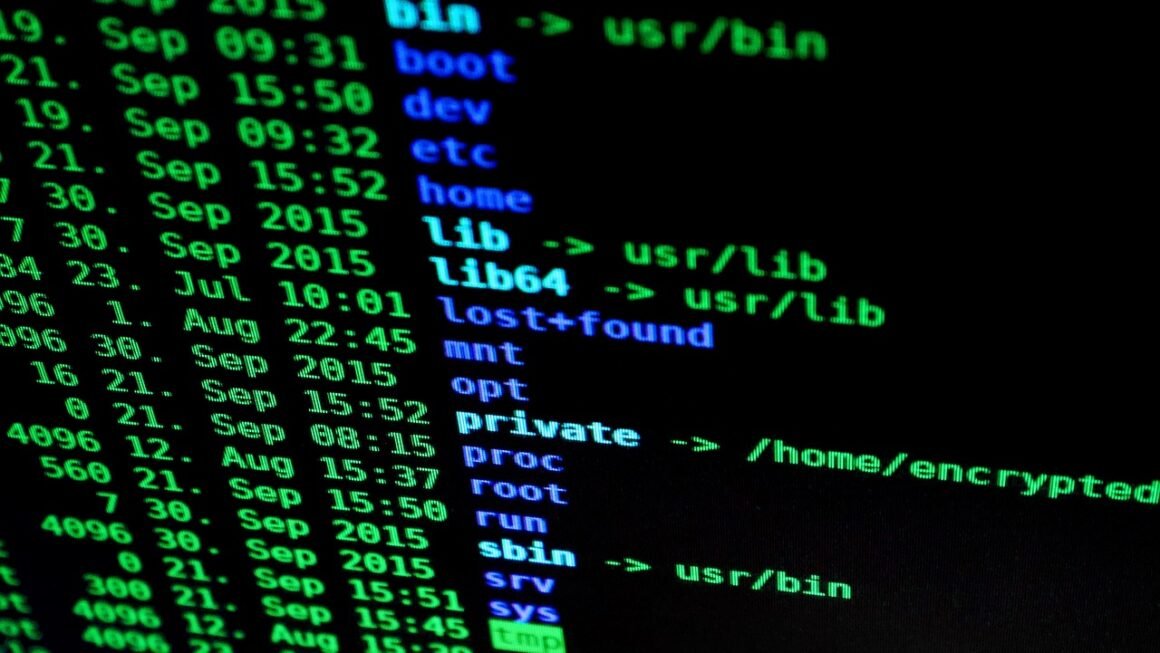In today’s digital landscape, where cyber threats are constantly evolving and becoming more sophisticated, having robust antivirus protection is no longer optional—it’s essential. From safeguarding your personal data to protecting your business operations, the right antivirus software acts as your first line of defense against a myriad of online dangers. This guide dives deep into the world of antivirus solutions, helping you understand the threats they combat, the features to look for, and how to choose the best protection for your needs.
Understanding the Threat Landscape
The Ever-Evolving World of Malware
The world of malware is constantly changing, with new threats emerging every day. Antivirus software must keep pace with these developments to effectively protect your devices. Here’s a glimpse into the types of malware you’re likely to encounter:
- Viruses: Malicious code that attaches itself to other files and replicates, spreading throughout a system.
Example: A virus might attach itself to a Word document and infect other documents when opened.
- Worms: Self-replicating malware that spreads across networks without human interaction.
Example: The WannaCry ransomware worm spread rapidly across global networks in 2017, encrypting data and demanding ransom payments.
- Trojans: Disguised as legitimate software, Trojans secretly perform malicious actions once installed.
Example: A Trojan might appear to be a useful system utility but secretly installs spyware or opens a backdoor for attackers.
- Ransomware: Encrypts files and demands a ransom payment for their decryption.
Example: LockBit ransomware is a prevalent threat targeting businesses and individuals alike.
- Spyware: Secretly monitors your activity and collects personal information, such as passwords and financial details.
Example: Keyloggers are a type of spyware that records every keystroke, capturing sensitive information like login credentials.
- Adware: Displays unwanted advertisements, often redirecting users to malicious websites.
Example: Adware can hijack your browser’s search settings and display pop-up ads even when you’re not actively browsing.
The Impact of Cyberattacks
The consequences of a successful cyberattack can be severe, ranging from financial losses and data breaches to reputational damage and identity theft.
- Financial Loss: Ransomware attacks can cripple businesses, demanding exorbitant ransom payments. According to the 2023 Verizon Data Breach Investigations Report, the median cost of a ransomware incident is significant.
- Data Breaches: Stolen personal information can be used for identity theft, fraud, and other malicious purposes. The IBM Cost of a Data Breach Report consistently highlights the rising costs associated with data breaches.
- Reputational Damage: A cyberattack can erode trust in your brand and damage your relationships with customers and partners.
- Actionable Takeaway: Stay informed about the latest threats and educate yourself and your family/employees about safe online practices.
Key Features of Effective Antivirus Software
Core Protection Mechanisms
Robust antivirus software utilizes various techniques to detect and remove malware.
- Signature-based Detection: Compares files against a database of known malware signatures. This is a foundational, albeit limited, form of defense.
Example: When a file is scanned, the antivirus software checks its digital fingerprint against known virus signatures.
- Heuristic Analysis: Analyzes the behavior of files to identify suspicious activity, even if the file is not in the virus database.
Example: If a file attempts to modify system files or connect to a suspicious network address, heuristic analysis can flag it as potentially malicious.
- Real-time Scanning: Continuously monitors your system for threats, providing immediate protection against infection.
Example: Real-time scanning intercepts malicious files as they are downloaded or executed.
Advanced Security Features
Modern antivirus software often includes advanced features that go beyond basic malware detection.
- Firewall: Monitors network traffic and blocks unauthorized access to your system.
Example: A firewall can prevent hackers from accessing your computer through vulnerable network ports.
- Web Protection: Scans websites for malicious content and blocks access to phishing sites.
Example: Web protection can warn you if you are about to visit a website known to host malware or engage in phishing scams.
- Ransomware Protection: Detects and blocks ransomware attacks, preventing your files from being encrypted.
Example: Ransomware protection can identify suspicious file encryption activity and block the process before it can encrypt your data.
- Vulnerability Scanning: Identifies outdated software and security vulnerabilities on your system, prompting you to install updates.
Example: Vulnerability scanning can detect outdated versions of Adobe Flash Player or Java, which are often exploited by attackers.
- Sandbox: Allows you to run suspicious files in an isolated environment, preventing them from harming your system.
Example: You can use a sandbox to test a downloaded program before installing it on your main system.
- Password Manager: Securely stores and manages your passwords, helping you avoid using weak or reused passwords.
Example: A password manager can generate strong, unique passwords for each of your online accounts and automatically fill them in when you log in.
- Actionable Takeaway: When choosing antivirus software, prioritize solutions with a combination of core protection mechanisms and advanced security features.
Choosing the Right Antivirus Software
Factors to Consider
Selecting the right antivirus software involves carefully evaluating your specific needs and comparing different solutions.
- Operating System Compatibility: Ensure that the antivirus software is compatible with your operating system (Windows, macOS, Android, iOS).
- Performance Impact: Choose software that doesn’t significantly slow down your system. Some antivirus programs are resource-intensive. Look for benchmarks and user reviews discussing performance.
- Ease of Use: Opt for a user-friendly interface that is easy to navigate and configure. A complicated interface can lead to misconfigurations and reduced security.
- Cost: Antivirus software is available in a range of price points, from free to premium. Consider your budget and the level of protection you need. Free solutions often lack advanced features.
- Customer Support: Choose a provider that offers reliable customer support, in case you need assistance.
- Independent Testing Results: Consult independent testing labs such as AV-Test and AV-Comparatives to see how different antivirus products perform in real-world scenarios.
Free vs. Paid Antivirus Solutions
While free antivirus software can provide basic protection, paid solutions generally offer more comprehensive features and better performance.
- Free Antivirus:
Pros: Cost-effective, provides basic malware protection.
Cons: Limited features, may not include advanced protection against ransomware or phishing, often supported by ads.
- Paid Antivirus:
Pros: Comprehensive protection, advanced features, dedicated customer support, often includes additional security tools.
Cons: Requires a subscription fee.
- Actionable Takeaway: Assess your risk profile and budget to determine whether a free or paid antivirus solution is the best fit for your needs. If you handle sensitive data or rely heavily on your computer, a paid solution is highly recommended.
Maintaining Your Antivirus Protection
Regular Updates and Scans
Keeping your antivirus software up-to-date is crucial for maintaining effective protection.
- Automatic Updates: Enable automatic updates to ensure that your antivirus software always has the latest virus definitions and security patches.
- Scheduled Scans: Schedule regular scans to detect and remove malware that may have bypassed real-time protection. A full system scan at least once a week is generally recommended.
- Manual Scans: Perform manual scans when you suspect your system may be infected.
Safe Browsing Practices
Even with the best antivirus software, safe browsing habits are essential for preventing malware infections.
- Avoid Suspicious Websites: Be cautious of websites that look unprofessional, contain excessive ads, or ask for personal information.
- Don’t Click on Suspicious Links: Avoid clicking on links in emails, social media posts, or instant messages from unknown senders.
- Download Software from Official Sources: Only download software from the official websites of the developers or reputable app stores.
- Be Wary of Attachments: Exercise caution when opening attachments from unknown senders, especially executable files (.exe).
- *Actionable Takeaway: Proactive security habits are just as crucial as having effective antivirus software. Combine the two for maximum protection.
Conclusion
Choosing and maintaining robust antivirus software is a critical step in protecting yourself and your data from the ever-evolving threat landscape. By understanding the types of malware you face, the key features to look for in antivirus solutions, and the importance of regular updates and safe browsing practices, you can significantly reduce your risk of becoming a victim of cybercrime. Don’t wait until it’s too late – invest in the right antivirus protection today and stay safe online.



